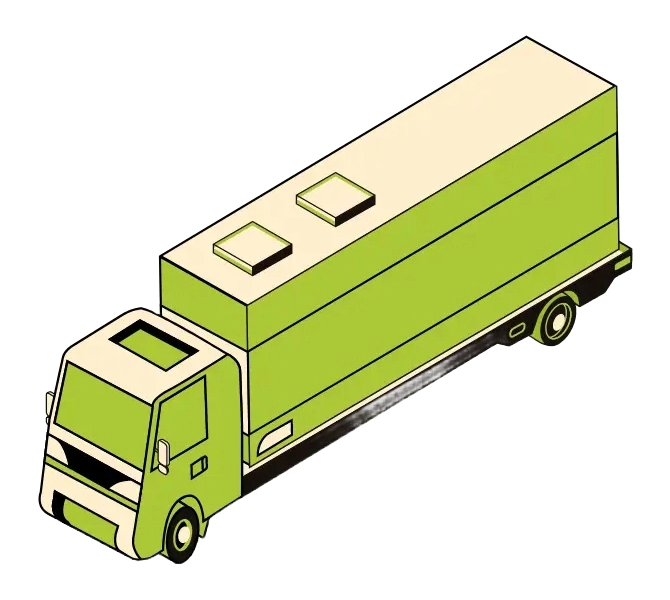Heavy Highway Vehicle Use Tax?
HVUT is an annual federal highway use tax paid to the federal Internal Revenue Service (IRS) on vehicles operating on public highways at a gross weight of 55,000 lbs. and greater. The federal government distributes revenues back to the states for highway construction and maintenance projects.
The Federal Highway trust fund (HTF) protects the nation’s investment in our transportation infrastructure. In 2007 alone, Federal HTF receipts topped $39.9 billion, with $34.9 billion dedicated to the HTF’s Highway Account. The Federal HTF finances a broad spectrum of transportation investments, including:
- Highway improvements (e.g., land acquisition and other right-of-way costs, preliminary and construction engineering, construction and reconstruction, resurfacing and restoration costs of roadways and bridges)
- Highway and bridge maintenance activities
- Highway law enforcement
- Bulk upload
- Safety programs (e.g., driver education and training, vehicle inspection programs, enforcement of vehicle size and weight limits)
- Congestion relief projects
- Debt service
- Administrative costs (e.g., research, engineering) Investment in our nation’s highway infrastructure helps:
- Save lives, time and money
- Reduce the number and severity of crashes for all kinds of vehicles
- Enhance the ability of the entire community of emergency responders
- Lower fuel and insurance costs
- Increase mobility
- Ease congestion
- Decrease energy consumption
- Boost air quality
- Improve the efficient movement of goods
- Raise business productivity
- Strengthen the nation’s economic productivity Since the vast majority of all funds contributed by states to the Federal HTF are returned through highway fund apportionments, there is a direct incentive for state agencies to take necessary measures to enhance HVUT compliance.
What Is The Purpose Of IRS Form 2290?
The purpose of form 2290 is to:
- Figure and pay the tax due on highway motor vehicles used during the period with a taxable gross weight of 55,000 pounds or more.
- Figure and pay the tax due on a vehicle for which you earlier filed as suspended but later the vehicle exceeded the mileage use limit during the period.
- Figure and pay the tax due if, during the period, the taxable gross weight of a vehicle increases and the vehicle falls into a new category.
- Claim suspension from the tax when a vehicle is expected to be used 5,000 miles or less (7,500 miles or less for agricultural vehicles) during the period.
- Claim a credit for tax paid on vehicles that were destroyed, stolen, sold, or used 5,000 miles or less (7,500 miles or less for agricultural vehicles).
- Figure and pay the tax due on a used taxable vehicle acquired and used during the period.
Who Can Be Exempted From HVUT?
To be exempt from the tax, a highway motor vehicle must be used and actually operated by:
- The Federal Government,
- The District of Columbia,
- A state or local government,
- The American National Red Cross,
- A nonprofit volunteer fire department, ambulance association, or rescue squad,
- An Indian tribal government but only if the vehicle’s use involves the exercise of an essential tribal government function, or
- A mass transportation authority if it is created under a statute that gives it certain powers normally exercised by the state.
- Qualified blood collector vehicles used by qualified blood collector organizations.
When Should You File IRS Form 2290?
Form 2290 must be filed for each month a taxable vehicle is first used on public highways during the current period. The current period begins July 1, 2019, and ends June 30, 2020. Form 2290 must be filed by the last day of the month following the month of first use (as shown in the chart below). The filing rules apply whether you are paying the tax or reporting suspension of the tax. The following examples demonstrate these rules.
Example, John uses a taxable vehicle on July 1, 2010. John must file Form 2290 by August 31, 2010, for the period beginning July 1, 2010, through June 30, 2011.
Example, continued. John purchases a new taxable vehicle on January 3, 2011. The vehicle is required to be registered in his name. The vehicle is first used in January. John must file another Form 2290 reporting the new vehicle by February 28, 2011, for the period beginning July 1, 2010, through June 30, 2011.
| If, In This Period, The Vehicle Is First Used During… | Then, File Your Form 2290 And Make Your Payment By… |
|---|---|
| July | August-31 |
| August | September-30 |
| September | October-31 |
| October | November-30 |
| November | December-31 |
| December | Jannuary-30 |
| January | February-28 |
| February | March-31 |
| March | April-30 |
| April | May-31 |
| May | June-30 |
| June | July-31 |
If Any Date Falls On Weekend Or Public Holiday, You Need To File By The Next Working Day.
Drive worry-free with GreenTax2290 for your IRS Form 2290 filing needs!
- Calculate accurate HVUT taxes (2290) for annual and partial-year filings.
- Calculate non-refundable tax credits and apply them toward your tax liability.
- One-click e-File process of IRS Form 2290.
- Retrieve and print IRS-accepted Stamped Schedule 1 within minutes.
- Access completed Form 2290 anytime, anywhere stored under your profile.

- Amend Form 2290 to make necessary changes
- eFile VIN correction for no additional charge.
- Bulk upload multiple vehicle data
- Accucheck - We check your forms for errors even before the IRS does.




